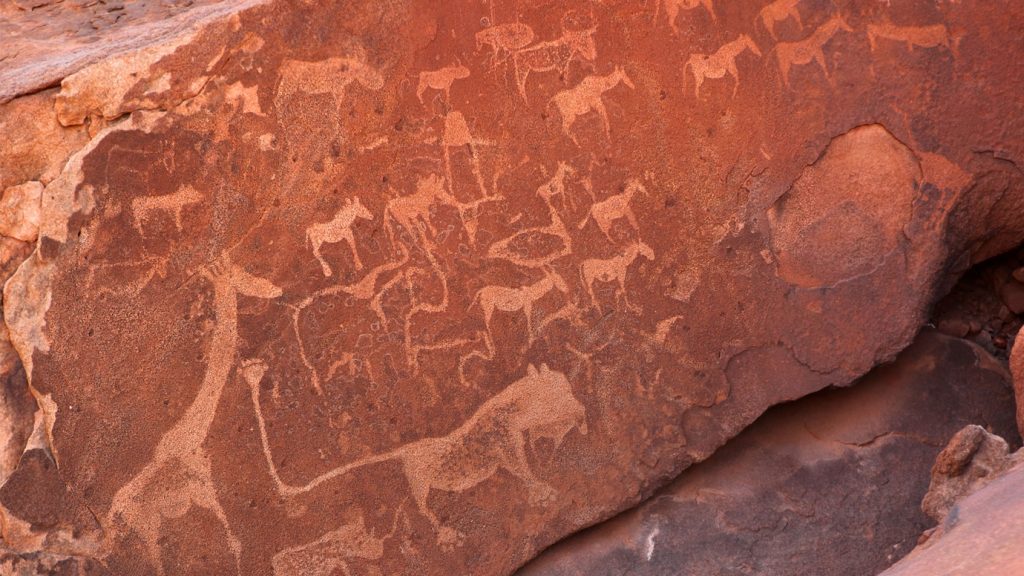Deep within the rugged expanse of Damaraland in Namibia, hidden amidst the ancient rock formations, lie silent storytellers of an age gone by. These storytellers are the San rock paintings, a vivid testament to the rich cultural heritage of the indigenous San people, who have inhabited this region for millennia. Join us on a journey into the heart of Damaraland as we unravel the meaning and origin of these captivating artworks.
The San people, also known as the Bushmen or Basarwa, are believed to be one of the world’s oldest indigenous cultures, with a history dating back over 20,000 years. Their way of life, deeply intertwined with nature, is reflected in the mesmerizing rock art that adorns the walls of Damaraland’s sheltered caves and rock overhangs.
Our expedition began in the town of Twyfelfontein, a UNESCO World Heritage site and home to one of the largest concentrations of San rock engravings and paintings in Africa. Our local guide, a knowledgeable San elder named Khoab, led us to the ancient canvases hidden among the russet-hued rocks.
As we gazed upon these enigmatic artworks, Khoab shared his wisdom about the meaning and significance of the paintings. The San people used the rock art as a form of communication, conveying their spiritual beliefs, daily life, and deep connection with the natural world. Each painting told a story, a glimpse into the intricate tapestry of their existence.
One of the most striking motifs we encountered was the eland, a large antelope that held great symbolic importance for the San people. Khoab explained that the eland represented spiritual potency and was often depicted in trance dances, where San shamans would communicate with the spirit world. The paintings of dancing shamans, adorned with animal masks and surrounded by ethereal creatures, transported us to a world where the lines between the earthly and the divine were blurred.
The San artists used a vibrant palette of ochre, red, and white pigments, derived from natural minerals and clay. These colors, still vivid after thousands of years, added to the mystique of the paintings. The scenes of hunters pursuing game, women gathering food, and rituals performed under the starlit African sky provided a glimpse into the daily lives and beliefs of the San people.
In our exploration of the art, we learned that these rock paintings were not only a means of expression but also a form of education. They passed down knowledge of hunting techniques, plant identification, and cultural traditions from one generation to the next. It was a visual encyclopedia of survival in the harsh Namibian landscape.
Beyond their cultural and historical significance, the San rock paintings also shed light on the environmental changes that have occurred in the region over millennia. Some paintings depicted animals that no longer inhabit the area, reflecting shifts in the climate and ecosystems. This offered valuable insights for modern-day conservation efforts.
Our journey through Damaraland’s rock art sites left us with a profound sense of reverence for the San people and their deep connection to the land. As travelers, we were privileged to witness these timeless visions and the spiritual resonance they held for the San people.
In conclusion, the San rock paintings of Damaraland, Namibia, are a treasure trove of ancient wisdom, cultural heritage, and artistic expression. They serve as a bridge to the past, connecting us with the enduring spirit of the San people and their profound connection to the natural world. These enigmatic artworks continue to inspire and intrigue, reminding us of the importance of preserving and respecting indigenous cultures and their ancestral legacies.




